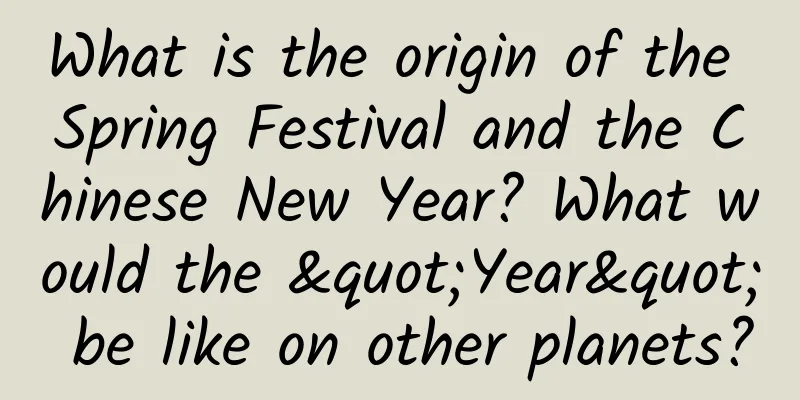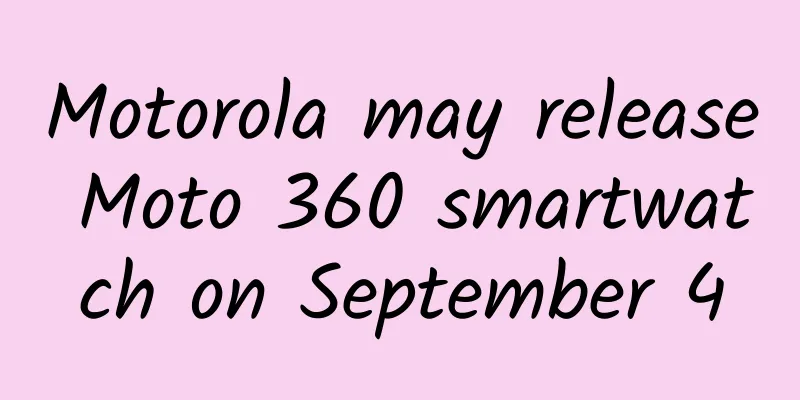What is the origin of the Spring Festival and the Chinese New Year? What would the "Year" be like on other planets?

|
It’s Chinese New Year! The lucky rat has left, and the ox is here to celebrate. I wish you all good fortune, wealth, and longevity! May your career be smooth, your work be successful, your love be sweet, your wealth be abundant, and your body be healthy. May the gloom of last year be swept away! On this great day when the whole country is celebrating and families are reuniting, we naturally have to talk about “Chinese New Year”. "Chinese New Year" is also called "Spring Festival", which is the most important festival for our Chinese nation. In a narrow sense, it refers to the period from the 30th to the 7th day of the lunar year. In a broad sense, it refers to the festive period from the 23rd day of the twelfth lunar month to the 15th day of the first lunar month, the Lantern Festival. "On the 23rd, sticky sugar melons are served; on the 24th, the house is swept; on the 25th, tofu is made; ... stay up all night on the 30th night; visit relatives and friends on the first day of the new year; worship ancestors on the second day of the new year; visit temple fairs on the third and fourth days of the new year; ... celebrate the Lantern Festival on the 15th night." According to legend, "Nian" was a very ferocious monster in ancient times. Every year on the 30th day of the twelfth lunar month, the Nian monster would come to the village to do evil, devour livestock, destroy crops, and kill people. Later, the villagers found that setting off firecrackers could scare away the Nian monster, so that it could not harm the village and bless the next year to be peaceful. This custom has been passed down and gradually evolved into our Spring Festival. Nowadays, people often use the Gregorian calendar, so the time of the Spring Festival is not fixed. Last year, the lunar calendar had an extra April, so this year is considered a late Spring Festival. But in history, the Spring Festival in 1985 was the latest. That year, the strong ox did not stagger until February 20. The earliest Spring Festival was the Spring Festival in 1966. That year, the galloping horse stepped on the beat of the New Year as early as January 21. The Chinese New Year is the Spring Festival, the first day of the first lunar month. The Western New Year is January 1 of the Gregorian calendar, New Year's Day. Humans all have a sentiment of bidding farewell to the old and welcoming the new, and praying for good weather and good harvests in the coming year. On this day of celebration, we savor the bitterness and sweetness of the past 365 days, and look forward to and plan for the beautiful vision of the next 365 days. There are always 356 sunrises in a year that favor humans on Earth, so what will the "year" be like on other planets in the solar system? Mercury is the closest to the sun among the eight planets in the solar system. It is the smallest in size, but this "little brother" is the most blessed. Pulled by the powerful gravity of big brother the sun, it can orbit the sun once in about 88 Earth days, which means that we can welcome the New Year every 88 days! Venus is the closest planet to the Earth and plays an important role in traditional Chinese culture. Venus is called the Morning Star and is the brightest star in the night sky. Its apparent magnitude can reach -4.7, which is enough to cast a shadow on the ground. It also has an elegant name - Taibai. Legend has it that the poet Li Bai is the reincarnation of Taibai Venus. It takes about 243 Earth days for Venus to rotate once and about 224 Earth days to orbit the sun. Coincidentally, this idiom can perfectly describe it - "spending a day like a year". Mars is the fourth planet from the sun. On the festive day of the first day of the Chinese New Year, this brother planet sent a special New Year's gift to Chinese people around the world through the "Tianwen-1". After more than half a year of long journey, China's "Tianwen-1" Mars probe finally successfully docked in the orbit of Mars on February 12 and sent back stunning images of Mars. When it comes to this red planet, humans always have endless topics to talk about. Indeed, it is the most Earth-like of the eight planets and is even known as the second home of mankind. The length of a day on Mars is almost the same as that of the Earth, and it takes 1.026 Earth days to rotate once. The orbital period of Mars is about 687 Earth days, almost twice that of the Earth. Therefore, every two years, the Earth and Mars will "meet", and there will be a precious window period for Mars exploration. Jupiter, a gas giant, is mainly composed of hydrogen and helium. It is known as the king of planets and is 2.5 times the mass of other planets in the solar system. The famous storm cyclone on Jupiter, the "Great Red Spot", can easily accommodate the entire Earth. Jupiter's rotation takes only about 10 hours, and its revolution takes about 12 Earth years. In ancient times, Jupiter was called the year star. The ancient sages divided the celestial sphere into twelve parts. Jupiter travels through one part every year, and twelve years is a ji. Readers familiar with "Journey to the West" may have some impression of "ji". In the CCTV version of "Journey to the West-Sequel", Tang Monk and his four disciples passed by the mansion of the philanthropist Mr. Kou, and Mr. Kou warmly entertained them. Not long after, Mr. Kou was killed by the vicious housekeeper and his property was robbed. Sun Wukong thwarted the housekeeper's conspiracy, and went to the underworld in the name of the Great Sage. He wrote a ji for Mr. Kou in the Book of Life and Death. This ji is twelve years. As the planets get farther away from the sun, their orbits get longer and longer, and it takes longer to complete one orbit. A year on Saturn is about 10,759 Earth days, a year on Uranus is about 30,667 Earth days, and a year on Neptune is about 60,152 Earth days. In this reunion festival, we naturally can't forget Pluto, the ninth largest planet, whose year is about 90,498 Earth days. Pluto is located in the Kuiper Belt at the edge of the solar system, where a large number of frozen bodies and dust fragments gather. Short-period comets originate from here. For example, the famous Halley's Comet orbits the sun once every 76.1 years. In a sense, its year is about 27,776 Earth days. The next return of Halley's Comet will be in 2061. The editor who drifted to the edge of the solar system, rode a small comet flying to the earth, traveled through the long road of stars, and returned to the home of the earth. The traveler returned home, and the joy of the New Year came, with a warm New Year's Eve dinner and delicious dishes. Here, the editor raised his glass high, and thousands of words and endless blessings were summed up in one sentence - "Everything will be good in the coming year!" (Please obtain authorization for reprinting, otherwise legal action will be taken; the pictures in this article are from the Internet, thanks to the original author, if there is any infringement, please contact to delete) |
>>: Scientific explanation: Why are some men so confident when they are so ordinary?
Recommend
Why do users convert?
Before you start reading this article, please thi...
What efforts have scientists made to help you eat more sweeter sugarcane? (Part 1)
Produced by: Science Popularization China Author:...
APP promotion method: How to get downloads for free?
When promoting an APP, there is a method that is ...
Why did Apple use the San Francisco font in iOS 9?
In the new product category of smartwatch Apple W...
3 days, 0 budget, sales of 10,000 goods, all the activity methodology is here!
The article combines the author's actual expe...
Weibo Fans Advertising and Charging Standards!
1. Introduction to Fantong What is Fantong? To pu...
Alibaba.com's Thin Package is 40MB - The Industry's Most Comprehensive Summary of iOS Package Size Technology
Preface Package size is an important indicator fo...
6 high-quality details of 100,000+ soft article titles
For soft articles, the first impression is the ti...
9032 meters! The second Qinghai-Tibet scientific expedition set a world record for atmospheric science observation by airship
The picture shows the Jimu-1 III airship in front...
Beer and barbecued crayfish...it turns out to be a "gout meal". How can we spend the summer in the future?
The temperature has been rising recently, and the...
Android open source time selection control
Source code introduction A powerful time selectio...
Hotpot is delicious, but it can be very harmful to your stomach if you don’t eat it right!
Recently, whenever I pass by a hot pot restaurant...
iPhone 6 has not yet received China's network access license. Apple refuses to comment
Apple Inc's iPhone 6 has passed a key regulat...
Official release is imminent, Apple: App Store now open for iOS 15 and iPadOS 15 app submissions
September 15 news: Early this morning, Apple told...









